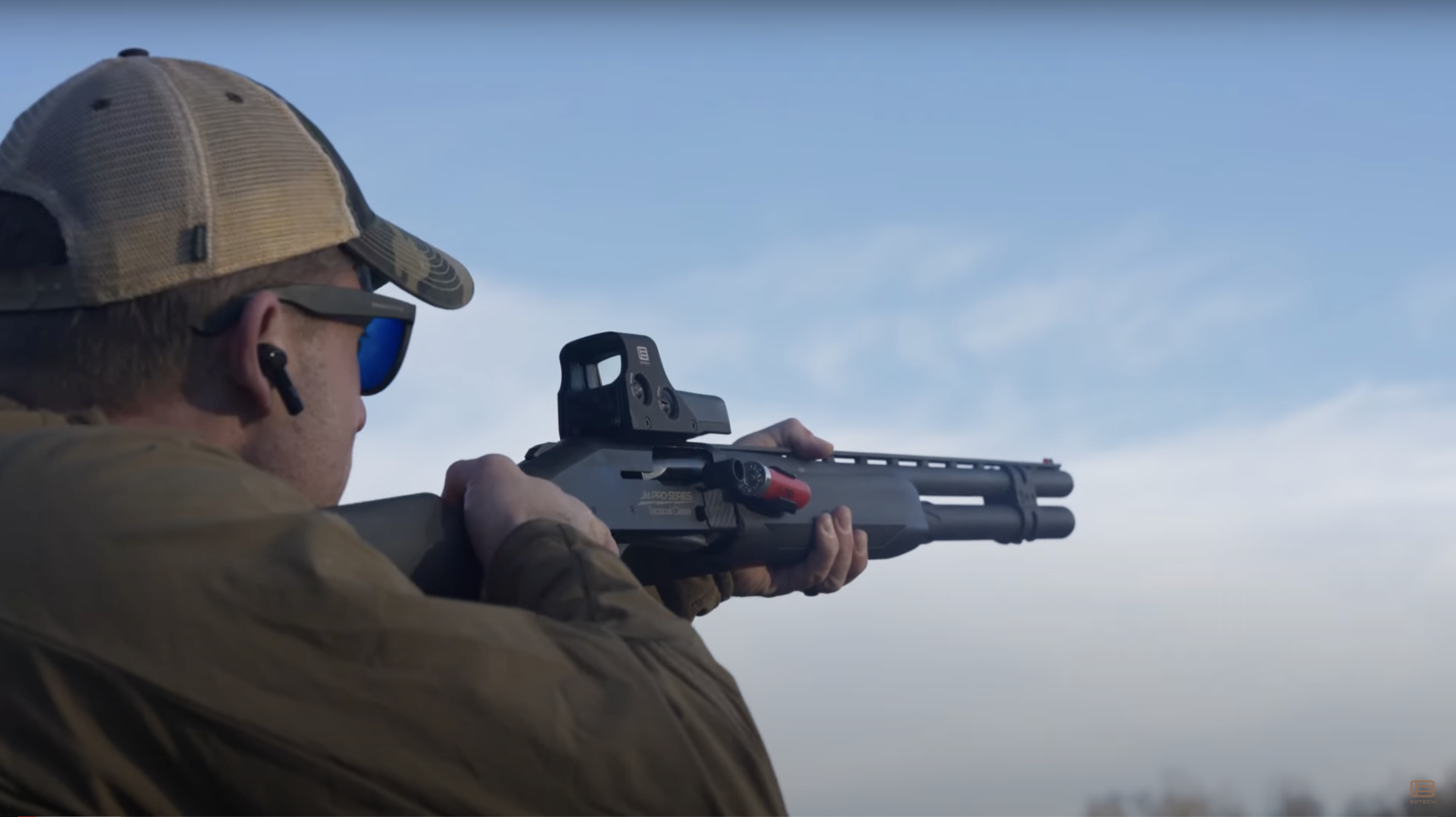Plus: HWS vs EFLX
Shotguns and Optics: Why We Think They’re a Perfect Match
Shotguns—they’re undeniably cool, versatile, and serve a wide range of purposes. But we’re not talking about shotguns in general. Instead, let’s dive into something that stirs up a lot of debates: using EOTECH holographic weapon sights (HWS) on shotguns. You might be wondering, “Aren’t those too tall for shotguns?” Well, we hear that question a lot, and while it’s ultimately a matter of personal preference, we’re here to give you our take on it—because that’s why you’re here, right?
Holographic Weapon Sights on Shotguns: The Basics
Let’s start by saying this: HWS are fast, and speed is a key factor in most shotgun applications. When you’re shooting up close and at fast-moving targets, you want something that can keep up. That’s where our holographic sights really shine. But here’s where the debate kicks in—people often say the comb height on most shotguns makes it hard to get a proper cheek weld with an HWS.
Shotguns typically have a sloping comb and a longer length of pull, so it’s natural to wonder if an HWS sits too high to get a solid cheek weld. And yeah, that’s a fair concern. But we think there are plenty of situations where it works great, and we’ll get into that.
Where the HWS Excels on Shotguns.
Where the HWS Excels on Shotguns
One of the most common uses for shotguns is bird hunting or sport shooting with clays. If you’re out there shooting birds or clays, guess what? You’re aiming up. Both eyes open, tracking fast-moving targets through the air—this is where the HWS window becomes your best friend. The big window offers an amazing sight picture, and since you’re not hugging the gun for recoil management, the traditional cheek weld isn’t as necessary as when you’re firing on a horizontal plane.
That wide, clear view lets you follow your target with ease, and the fast aiming that holographic technology provides gives you an edge. Whether you’re knocking down a bird or breaking a clay, the HWS makes sure you get that shot off quickly and accurately.
Other Use Cases: Deer, Turkey, and Target Shooting
Now, let’s talk about deer hunting, turkey hunting, or target shooting—scenarios where you’re shooting more on a level plane. For these applications, the HWS still works great. You don't have to on a traditional cheek weld; instead, you can index off of your chin. That provides consistency across platforms, whether shooting a rifle or a shotgun, and it helps manage recoil effectively.
But if you’re someone who really likes a lower sight and a more traditional cheek weld, we’ve got you covered with the EFLX.
The EFLX: A Lower-Profile Option for Shotgun Lovers
The EFLX has a smaller footprint, lower window, and sits much closer to the bore. For those of you who want a true cheek weld or feel the HWS is a bit too tall, this might be your answer.
But switching to the EFLX will force you to bury your head down a little more to get a good sight picture. Again, it comes down to personal preference—how do you like to shoot? How do you manage recoil? And most importantly, how can you use your optic to get the most accurate shots for your intended purpose?
Pros and Cons: HWS vs. EFLX on Shotguns
Let’s break it down:
HWS:
- Bigger, heavier, and with a larger window.
- Faster aiming thanks to the holographic technology.
- Features the Circle-Dot Reticle that we’re known for.
- Here’s where it gets cool—the 68 MOA ring around the reticle can help you pattern your shotgun. If you’re not shooting rifled slugs, you’ve got a spread of pellets to manage, and that reticle gives you a rough guide to where your pattern is going to land. It’s a fantastic reference point for quick, close-range shots.
EFLX:
- Smaller, lighter, and lower to the bore.
- Great for those who prefer a chin weld or cheek weld.
- Still gives you a clear, simple aiming reference for birdshot, buckshot, or rifled slugs.
It All Comes Down to Preference
Whether you’re more of an HWS fan or an EFLX enthusiast, we’ve got an optic that’ll suit your needs. Old-school iron sights have worked for decades, and we respect that. But we’re throwing it out there—optics are the future. They make you faster, more accurate, and more consistent. And who doesn’t want that?
So, what do you think? Give one (or both) of these optics a try on your shotgun, and let us know your thoughts. Find us and talk to us on socials—we’d love to hear how you like to run your shotgun setups.
Thanks for reading – train hard and live free!







Share:
EOTECH Human Resources Recognized for Excellence
The EOTECH EFLX Red Dot Sight